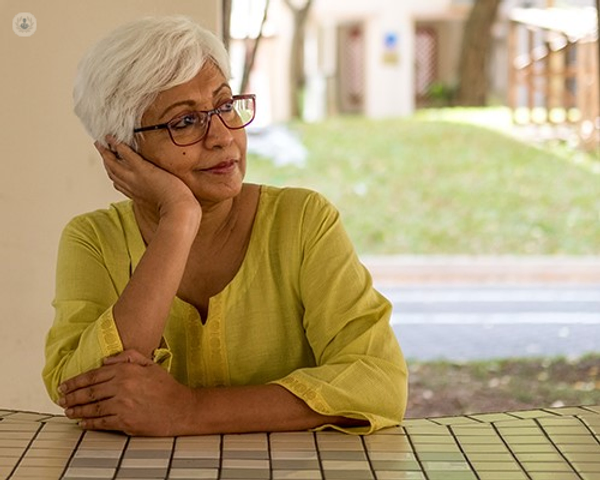How to treat vaginal atrophy

Vaginal atrophy is thinning and dryness of vaginal skin, which usually happens after the menopause. It can also happen in women who exclusively breastfeed, take breast cancer medications or have recurrence risk-reducing intervention following breast cancer treatment, such as the removal of both ovaries.
Over the past ten years, treatment for this common condition has changed. We recently spoke with a leading London-based women’s health expert and consultant gynaecologist Mr Mahantesh Karoshi to discuss vaginal atrophy, its symptoms and how it should be treated.
What causes vaginal atrophy?
Vaginal atrophy occurs when there is a decrease in the blood’s oestrogen level, which causes thinning of the vaginal skin. The vaginal skin is extremely sensitive to oestrogen levels and when the blood’s oestrogen levels drop, the cells of the vagina start to shed-off and the skin becomes thin.
What are the symptoms of vaginal atrophy?
The symptoms of vaginal atrophy may include a burning sensation, dryness, itching, difficulty during sexual intercourse and vaginal spotting (losing blood) because the skin is so thin that it breaks easily.
How can vaginal atrophy be treated?
The most commonly used interventions are vaginal moisturisers as they are specifically made for vaginal skin and are similar to body moisturisers but have been adapted slightly. The drawbacks of vaginal moisturiser are that its only temporary relief and a woman might feel a bit messy, or it can leak and stain underwear. There are vaginal oestrogens; you can insert a pessary, cream or ring, and this can help relieve vaginal dryness but will not help with many of the other symptoms including hot flushes.
Women who have suffered as a result of breast cancer treatment don’t usually like to take anything with hormones because breast cancer is sensitive to hormone use and it can affect the remaining part of the breast tissue. Most patients don’t take vaginal oestrogens, even if there are no contraindications, they are reluctant to use them.
How else can it be treated?
Vaginal laser treatment is the ‘new kid on the block’ so to speak. You may have seen or read that people used it for laser facial treatment but it is also available for women that have vaginal atrophy. A gynaecologist who was friends with a skin specialist was one-day talking about vaginal atrophy and they decided to test the facial laser with a probe that can be inserted into a vagina.
Vaginal laser treatment was developed by Professor Stefano Salvatore, a gynaecologist based in Milan. He ran a medical trial on female patients with breast cancer, which is how the treatment started to be used. Then more women used it, it slowly became increasingly popular. The treatment has been around for roughly ten years.
If you’re currently experiencing symptoms of vaginal atrophy, make an appointment with top women’s health expert Mr Mahantesh Karoshi via his Top Doctors profile today.


